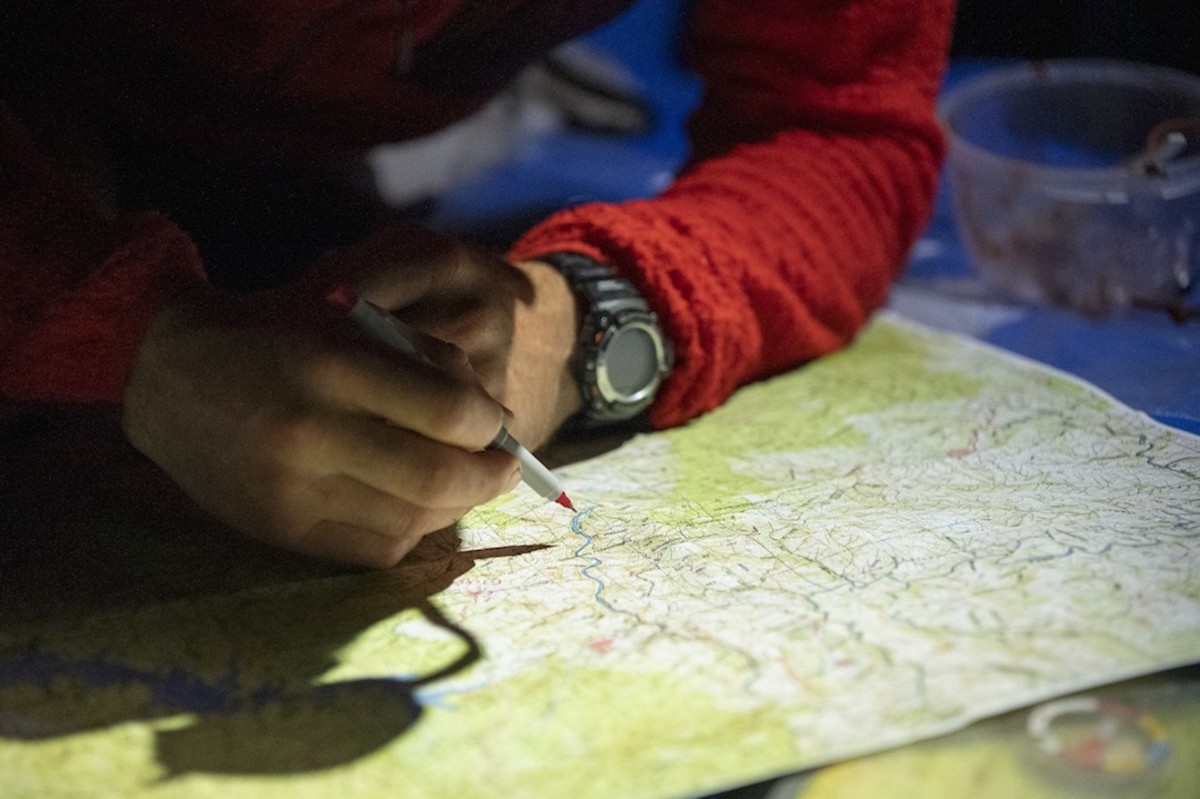Few modern endurance athletes have traveled across wild lands by as many means of outdoor activity as Nathan Fa’avae. Credit that effective movement across various environments and sport disciplines to the home base. Fa’avae lives on the South Island of New Zealand. There, he says locals jokingly liken the area—where it seems nearly all of the island’s one million-plus residents carry kayaks, surfboards, skis, or climbing gear in their cars year-round—to one big adventure club. Fa’avae grew up connected to the outdoors: camping, fishing, diving for food, and cooking over fires on the beach with his family. By his late teens, Fa’avae knew he wanted to be an adventure professional and studied for work as an outdoor educator, learning the ropes in sports like rock climbing, kayaking, and mountain biking (the latter of which he raced semi-professionally, qualifying to represent New Zealand in the 1996 Summer Olympics, though he ultimately did not have the opportunity to compete).
By 1999, Fa’avae’s proficiency across sport segments led him to adventure racing. In the 20 years since, he and his teams have won six world championships, two Eco-Challenges (including the most recent in 2019), and an exhaustive list of internationally respected races. Compare the renowned Kiwi to your all-time alpha of choice; in adventure racing, Nathan Fa’avae is the GOAT.
And as outdoor sports such as trail running, biking, and backcountry skiing are having current all-time surges in participation (with countless new participants looking for knowledge on how to safely enjoy the wilderness), few have better insight than Fa’avae. As a professional athlete, outdoor educator, and father of three, the 48-year-old adventure racing legend has much accumulated knowledge to divulge. Three of the biggest pieces of outdoor advice he has to share are almost surprisingly straightforward.

Watch the weather
“Be very mindful of what the weather is doing and the forecast,” says Fa’avae. “Here in New Zealand, weather can change very quickly. On the South Island we have the Southern Alps, which come straight out of the sea and go up to 4,000 meters (13,000 feet) at their highest. Our weather comes from the west, but most of the people live on the east side of these mountains. So we don’t see the weather until it comes over the mountains, with very little warning. You need to look at the forecast, and be aware of how that affects the area you are going to.”
When planning an outing, Fa’avae asks himself, “Where is the weather coming from? How will it affect our trip? Is it still worth doing, or are we asking for trouble?”
For example, Fa’avae shares some insight from (what was) a planned hiking and packrafting trip with his teenage children. “We want to head up into some reasonably high mountain passes then drop into a river system and packraft back—completing a loop over a few days,” he recalls. “It can snow here in the mountains any time of year. So if we are getting a cold weather system coming from Antarctica we might say, ‘Let’s change our trip to stay low, and stay in valleys, and not get up in the exposed high country.’ Or there might be westerly weather that is causing flooding.
You have to juggle those equations, and it’s not that you can’t go. It’s making sure the trip you are doing is suitable for the forecast you’ve got.”

Learn how to use a map and compass
“We were perhaps a little bit lucky looking back on some of our earlier stuff,” Fa’avae says reflecting on his formative years as an adventure athlete. “We came unstuck a few times just not really being able to read the map properly. For some years I would carry a compass around and never really knew how to use it. It just seemed like something we should have. You can make your trips a lot safer by being able to navigate. Then, if something does go wrong, you know what your options are, because you actually know where you are. It’s a skill that is being lost because of GPS, but there are limitations to GPS. People should go back to the basics.
The main thing is, you need to have the map in your hand.
To me navigation is actually having the map in your hand the whole time, and reading it as you go. The idea is knowing where you are at all times. The only way you can do that is by what we call, ‘keeping contact with the map.’ So as you walk along you can say, ‘OK we are at this trail junction,’ then carry on, and say, ‘now we are at this creek here.’ Navigation is not just about taking a map on your trips, it’s about having your map out so you can read it, and follow it.”

Be realistic about your abilities
Perhaps the most straightforward, and at the same time nebulous, of Fa’avae’s advice is to know where you stand with the endeavor you want to take on.
“As much as I encourage people to challenge themselves and take risks,” he says, “you don’t want to push that too far. You have to find the balance, which can be difficult to do.
I recommend starting off conservative and extending your comfort zone in a sensible way. Ideally being realistic about your ability in what you are doing,” says the six-time adventure racing world champion with a lifetime of experience exploring the natural world. “To enjoy the outdoors it doesn’t have to be life threatening.”
from Men's Journal https://ift.tt/3uqtDhs



No comments:
Post a Comment